Many modern indie action games have leveraged the aesthetics of the 16-bit era, but have done so via present-day engines like GameMaker and Construct. Earthion, conversely, was developed natively for Sega Genesis, and then ported to modern platforms. This lends the shoot-’em-up an extra layer of credibility, which is only reinforced when you realize Yuzo Koshiro, who scored classics like The Revenge of Shinobi, Streets of Rage, and Beyond Oasis, produced the game. For those who grew up on Genesis and Mega Drive, Earthion is a beautiful homecoming. But is it worth playing for those with no memory of Sega’s golden age?
Earthion takes place in the far future, when humanity decides to colonize Mars after depleting Earth’s resources and ruining its environment. Not everyone made the trip however; some elected to stay behind in search of a solution. Little did they know that lurking behind the dark side of the moon was an alien invasion fleet, which set upon the blue planet. The nations that survived the onslaught banded together to form a unified space force called Earthion. Using technology captured from enemy weaponry, the space force developed a powerful new fighter — the YK-IIA — and prepared to launch its counteroffensive. The pilot: Azusa Takanashi, an environmental researcher who lost her family in the initial attack.
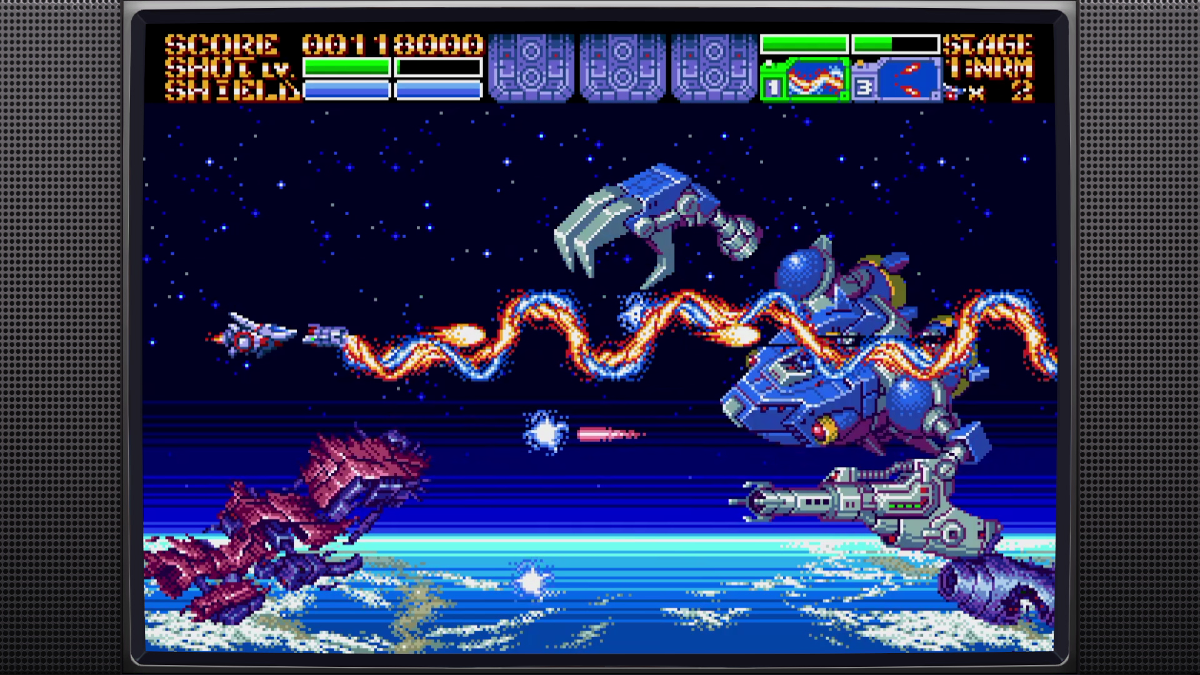
Apart from cinematic bookends at the beginning and end of the campaign, there isn’t much storytelling in Earthion. That said, those scenes, which first introduce the threat and ultimately provide closure, are interesting and beautifully-animated.
Actually, everything is beautifully animated in Earthion. Considering the limitations of the Genesis hardware, it’s mind-boggling what Koshiro, director Makoto Wada, and developer Ancient Corporation were able to achieve with this game. This is one of the prettiest shmups you’ll ever play, thanks to detailed sprites, lavish animations, eye-popping special effects, and some clever use of parallax scrolling, scaling, and pseudo-3D. And all this is achieved with virtually zero slowdown (I experienced only one brief hiccup during a death/respawn animation in the middle of an especially hectic scene, something I wasn’t able to recreate).
The only graphical issue involves bullet speed, density, and clarity. There are times in the game, especially in stage two, when fast-moving, tiny enemy bullets blend into the background or disappear into the general visual chaos, resulting in some unearned collisions.
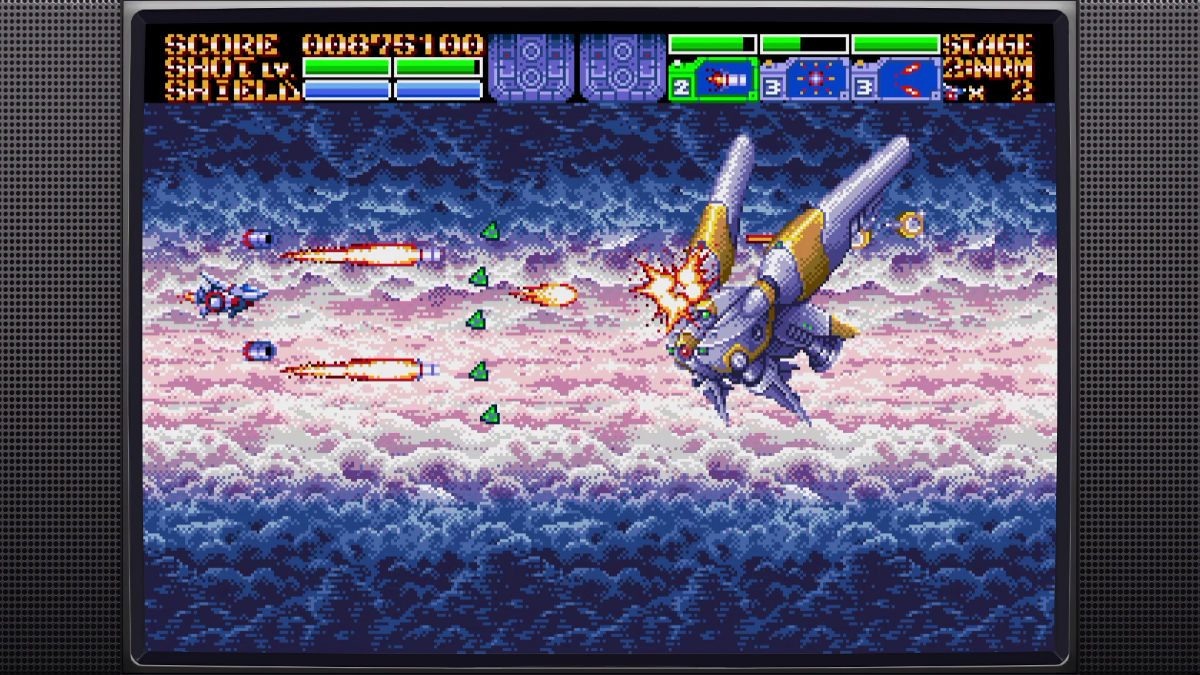
Still, the graphics are ridiculously good. And the soundtrack isn’t far behind. Composed by Koshiro, it leverages the Genesis sound chip in creative, audacious ways. It’s driving, rousing, and even sinister at times. The best individual songs are “Rush to the Core”, a fast-paced, thumping rock anthem, and “Final Gambit”, a triumphant tune that borrows heavily from Gradius.
While the audiovisual piece of Earthion is more or less unimpeachable, its gameplay is not entirely flawless. Let’s start with the good. One, the ship controls are overall tight and responsive. The YK-IIA is a touch too slow (speed up/down options would help here) but it’s hardly a deal-breaker. Two, the power-up system encourages player agency and tactical decision-making. Throughout the campaign, you can pick up several different sub-weapons, each with pros and cons. And you can also collect green gems called Solrium to make those sub-weapons (and your main shot) more powerful.
Now, this is where things get really intriguing. If you fill one of your sub-weapon slots with an Adaption Pod and hold onto it when the stage ends, you can upgrade your ship between stages. You can either enhance your main shot and shields, add a new sub-weapon slot, take an extra life, or start the next stage with a power-up. This adds a tense risk-versus-reward mechanic: do you enter each boss fight at full power in order to make it through intact or do you enter with one less power-up with the hope of making your ship stronger in the long run?
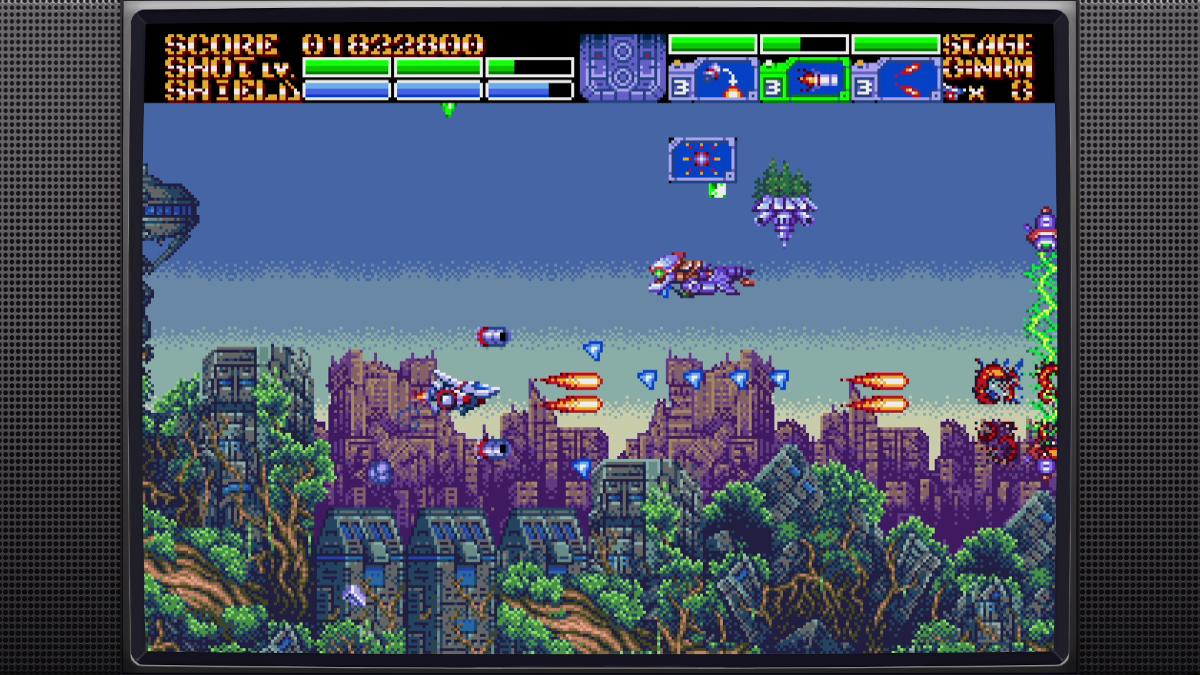
The only flaw with the power-up system is that some of the sub-weapons are simply better than others. I found myself discarding or avoiding most of them, and sticking only with the spread shot for crowd control and the forward laser for larger ships and bosses.
Speaking of bosses, they’re generally great in Earthion, with interesting attack patterns, multiple phases, and varied offensive maneuvers. The one exception to that rule is the stage seven boss fight, which borders on tedious. The levels that precede these climactic fights are also well-designed and diverse. Some are wide open, some ask you to navigate around debris, and others demand you snake through caverns and tight spaces. There’s an especially memorable section in stage five where a jagged, rocky cave ceiling shifts independently of the scrolling action. The downside to this diversity is a sense of tonal confusion. Rarely does Earthion feel like a single, cohesive journey from Earth to an enemy stronghold; more often it feels like a shoot-’em-up greatest hits album, with ideas borrowed from Thunder Force, Gradius, R-Type, and Salamander.
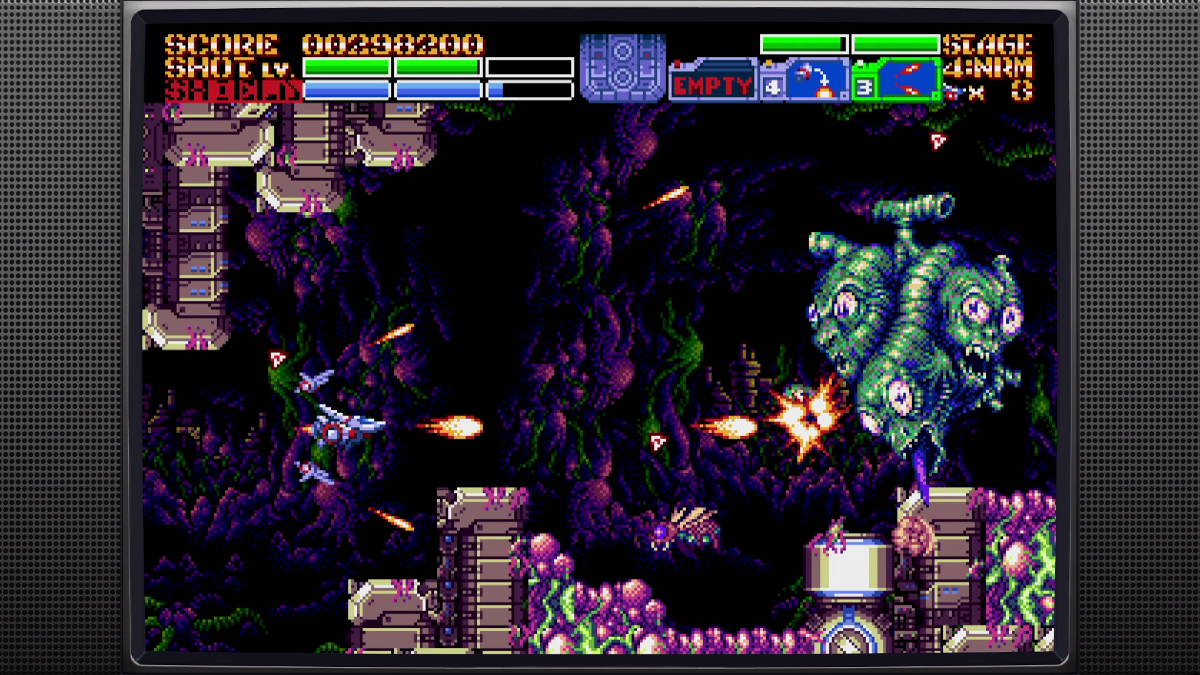
While Earthion is ambitious in terms of level design, it’s weirdly, disappointingly nonchalant when it comes to scoring. You shoot enemies & debris and collect Solrium, and that’s pretty much it. It’s all very basic. The game would benefit greatly from the addition of multipliers, medals, time bonuses, and other behind-the-scenes logic. The scoring system in a shmup is a big part of its identity and longevity, after all.
On the subject of longevity, Earthion, like most shoot-’em-ups, is on the short side. You could finish its eight stages in only 45 minutes. Now, Ancient is able to extend that running time somewhat with the inclusion of a few things: online leaderboards; four different difficulty settings; a password system that sort of operates like a new game+; and a series of bite-sized challenge levels, where players must aim for high scores with a specific sub-weapon.
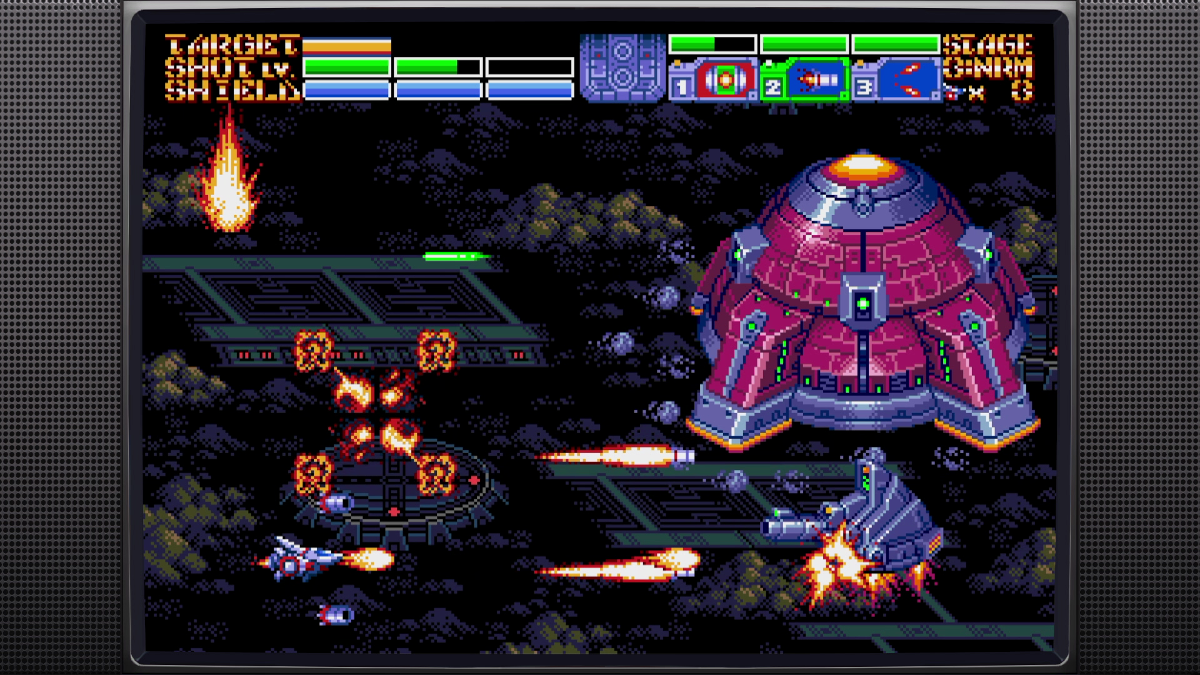
This modern console port, orchestrated by Bitwave, also comes with a few bonuses. That includes several scanline and pixel settings, multiple wallpaper options, a handful of playable demos, and best of all, an early prototype where the YK-IIA is a mecha.
Earthion is a beautiful love letter to the Sega Genesis and the 16-bit era in general, co-authored by someone who helped define its greatness — Yuzo Koshiro. It’s also one of the best looking and sounding shmups of any era. It’s not quite one of the best playing shmups, however, due to several minor flaws: tiny, hard-to-read bullets; imbalanced sub-weapons; and a rudimentary scoring system. Still, its successes in stage design, boss battles, and permanent upgrades help diminish those issues. If you grew up with games like Hellfire, Thunder Force IV, and Gaiares, you owe it to yourself to pick up Earthion right away.
Full Article – https://www.vgchartz.com/article/466031/earthion-ns/
